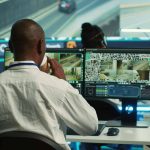Whether you are planning a short drive to the countryside or embarking on a long-distance road trip, ensuring your vehicle’s safety should always be a top priority. One of the most crucial components that need meticulous inspection is the emergency braking system. An effective braking system could be the thin line between a safe journey and a potent road accident.
This article provides a comprehensive guide on what to check in your car’s emergency braking system before hitting the road. We will discuss all the important factors, including Automatic Emergency Braking (AEB), brake lights, mirrors, and more. Let’s delve in and stay safe on the roads.
Topic to read : How should the tire pressure be adjusted for a lightweight vehicle during a UK heatwave?
Detailed Assessment of the Automatic Emergency Braking (AEB)
One of the most critical safety inventions in modern vehicles is the Automatic Emergency Braking (AEB) system. AEB is a technology designed to reduce the severity of high-speed collisions or, in some cases, prevent them altogether. This system automatically applies the brakes when it senses a potential collision.
Before embarking on your road trip, it’s vital to check the functionality of the AEB system. The AEB system typically relies on sensors, radars, or cameras to identify potential obstacles. Therefore, ensure these components are clean and not obstructed. Most vehicles will report an AEB malfunction on the dashboard, so pay attention to any warning signs.
Additional reading : How can you optimize the airbag sensitivity settings in a minivan to ensure maximum protection?
Additionally, you can test the AEB system in a controlled environment. Remember to do so at a slow speed and with enough space in front of you. The brakes should engage automatically when you approach an obstacle. If the AEB does not activate as it should, have a professional assess it.
Evaluating the Brake Lights and Front Lights
The car’s brake lights and front lights play a vital role in the vehicle’s safety. They communicate your actions and intentions to other road users. As such, ensuring their optimal functionality is paramount before setting out on a road trip.
For the brake lights, you need someone else to confirm they light up when you press the brake pedal. If they don’t, you may need to replace the bulbs or fuses. On the other hand, ensure the front lights, both low and high beam, are working correctly. Also, check that the lights are well-aligned to not blind incoming traffic but still light up the road ahead sufficiently.
Inspection of the Brake Pads and Fluid
The physical components of your braking system also need thorough inspection. This includes the brake pads and the brake fluid, both of which significantly affect your vehicle’s braking performance.
Worn out brake pads can compromise your braking efficiency and should be replaced before embarking on a road trip. You can check the brake pads through the spokes of the car wheels. The outer pad should be pressed against a metal rotor. There should be at least a 1/4 inch of the pad. If there’s less, it’s time to replace the pads.
Next, check the brake fluid. It should be clear or slightly yellowish. If it’s dark or has particles floating around, it’s time to replace it. Also, ensure that the brake fluid level is between the "Full" and "Low" markings on the reservoir.
Checking the Car Mirrors
Mirrors are an essential part of your vehicle’s safety system. They provide a clear view of your surroundings and help you make informed decisions when changing lanes or slowing down.
Before a road trip, confirm that all mirrors are in good condition and adjusted correctly. The rear-view mirror should give a full view of the road behind, while the side mirrors should capture the blind spots. If any mirrors are cracked or broken, replace them.
Test Your Car’s Speed Adaptation
Finally, check if your vehicle’s automatic speed adaptation system is functioning correctly. This system uses radars and a camera to detect the speed and distance of vehicles in front of you, adjusting your speed to maintain a safe distance.
You can test this system in a safe and controlled environment. Ensure that the vehicle smoothly adjusts its speed when other vehicles are detected in front of it. If the system is not working properly, seek professional help.
In conclusion, a thorough inspection of a vehicle’s emergency braking system is essential before a road trip. It not only ensures your safety but also gives you the confidence to enjoy your journey. If you notice any issues during your inspection, it’s advisable to seek professional help. Safe travels!
Importance of Forward Collision Warning and Color Recognition
The Forward Collision Warning (FCW) system is another critical feature in modern vehicles that ideally should be examined before embarking on your road trip. Like the AEB system, the FCW system uses radars or cameras to detect the presence of vehicles or obstacles in the car’s path. If it senses you are too close to the vehicle or obstacle ahead, it alerts you with visual or audible warnings, giving you a chance to react and prevent a potential collision.
Check the functionality of your vehicle’s FCW system, ensuring it is capable of detecting objects in your vehicle’s path and providing timely warnings. To test it, you should drive in a safe and controlled environment and observe if the system gives warnings when you approach an object too quickly. If you don’t receive warnings when expected, you may need a professional to assess the system.
In addition, it’s crucial to examine the color recognition ability of your vehicle. This refers to the vehicle’s capability to identify the proper colors of traffic lights, taillights, and other important road signals. Test your vehicle’s color recognition ability by assessing how your car reacts to different colors during your pre-trip inspection. If the system doesn’t seem to recognize or respond to colors appropriately, this could indicate a problem. In such a case, seeking professional help would be prudent.
Regular Maintenance and Operating Properly
Regular maintenance is essential to keep your vehicle’s emergency braking system operating properly. This includes checking your vehicle’s parking brake, turn signals, and other critical safety features.
Firstly, you should check the parking brake. It is critical for keeping your vehicle stationary when parked. To check the parking brake, you should park your vehicle on a slight hill. When you engage the parking brake, the vehicle should remain stationary. If it doesn’t, this indicates a problem that needs to be addressed.
Next, check the turn signals at the front and back of your vehicle. They are essential for indicating to other road users when you are planning to change direction. Turn on each signal and walk around your vehicle to confirm they are all functioning correctly.
In conclusion, there’s no denying the importance of inspecting your vehicle’s emergency braking system before a road trip. It’s not just about checking that the vehicle is operating properly but also ensuring that all safety features, including the AEB system, FCW system, brake lights, mirrors, and turn signals, are functioning correctly. Regular maintenance is also crucial. So, take the time to perform a meticulous vehicle inspection and pay attention to the color red, which signifies warnings or important functions in most vehicles. Remember, if you find any issues during your inspection, it’s best to seek professional help. Drive safe and enjoy your road trip!






